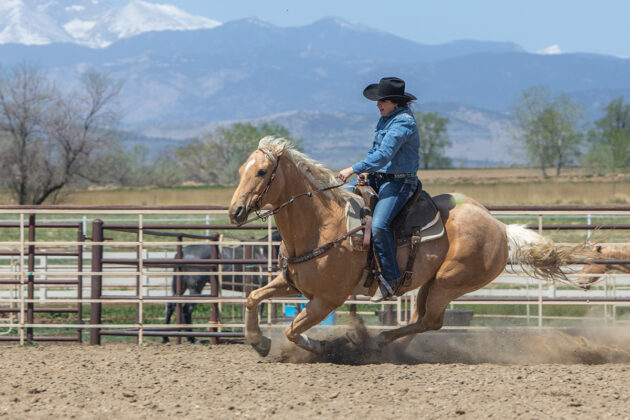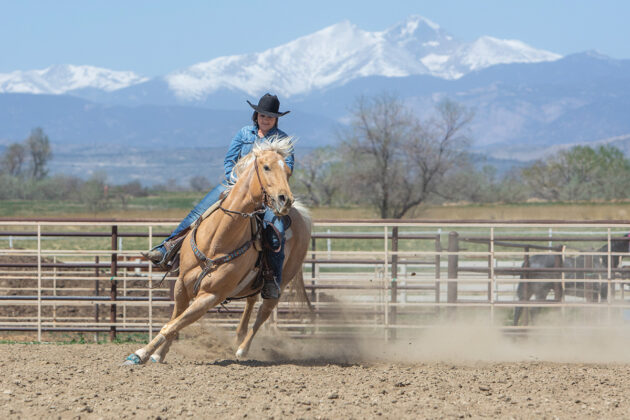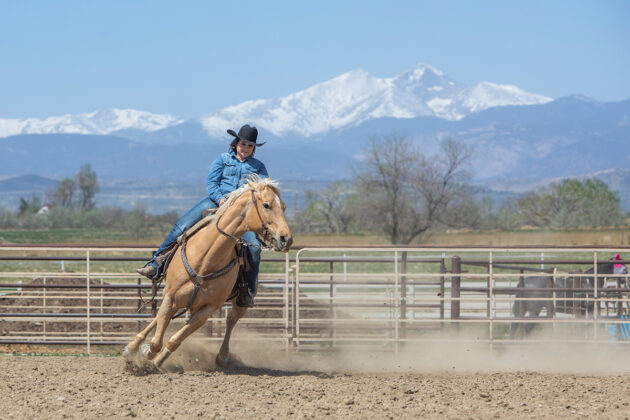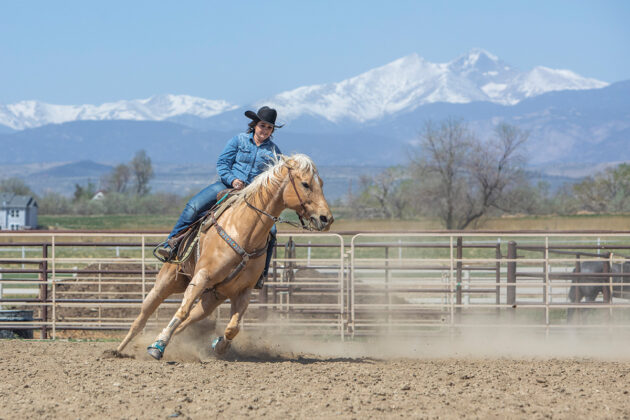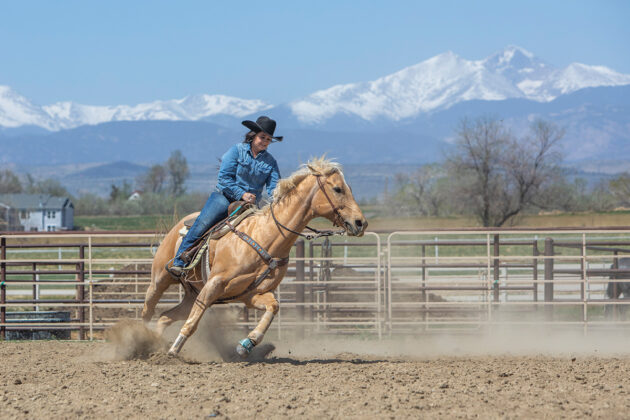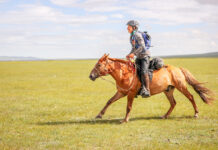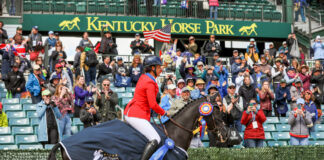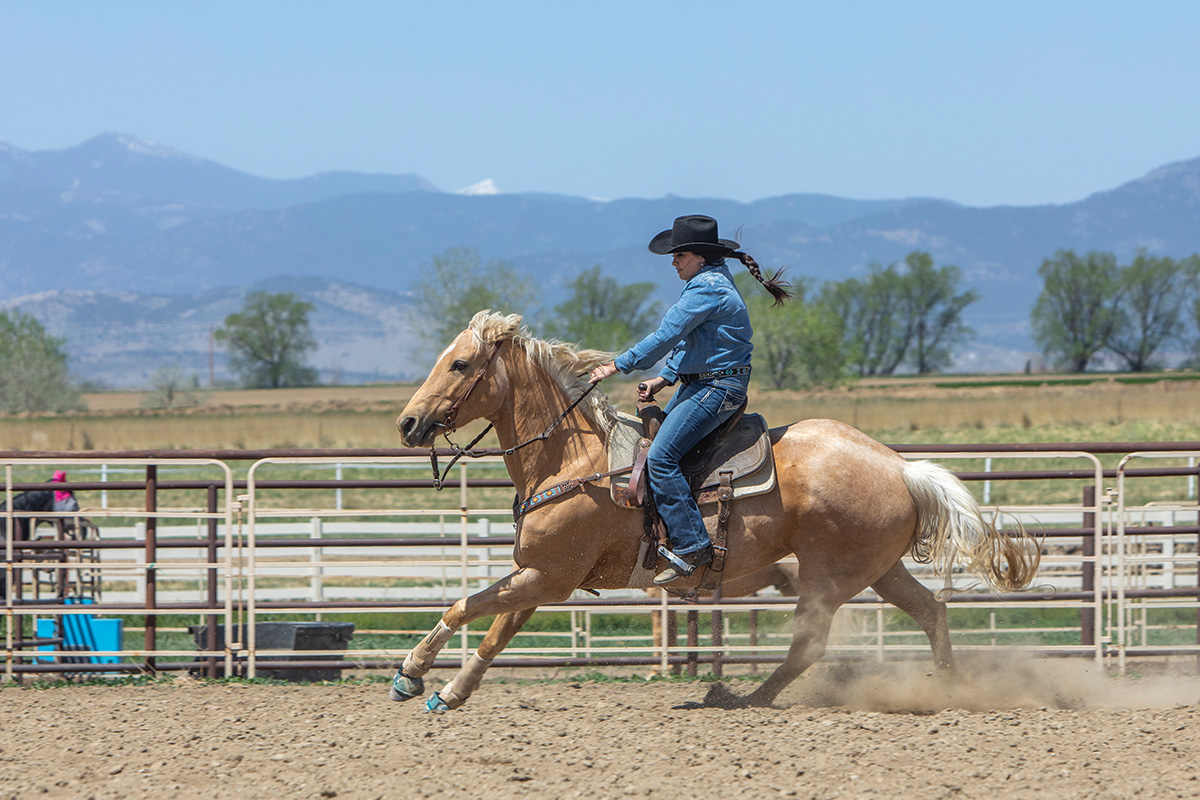
Does your barrel racing horse get overly excited when he sees the barrels? If he has the desire to run and turn, leaving you as a passenger instead of the driver, it’s time to refresh your cues. This means practicing without a barrel present. Working on speed changes and turns without the barrels will help your horse remember to listen to your aids instead of moving around the cans as he sees fit.
“This is one of the drills we work on to help riders get their bodies in the right position and get the horse and rider in the right timing without working on the actual barrel pattern,” she says. “This drill helps the horse listen to you and rate his speed and turn on cue. Sometimes horses get running and stop thinking. There’s more to the barrels than going fast and pulling them around. You want them to respond to you.”
With Kennedy Joseph’s barrel racing exercise, you can practice barrel racing elements anywhere. You’ll have the skills you need to ensure your horse is listening.
Ride the Diagonal
Begin by clearing the barrels from the middle of your arena so you’ll have ample space to lope and turn in various locations. You may leave barrels in the arena to help show your horse that the usual clover-leaf pattern isn’t the plan for today. Instead, he’s to follow your cues as you direct him on a new and different path.
Warm up your horse by working in each direction at the walk, trot, and lope. To begin the drill, ride to the corner of the arena. Position yourself so that the long side of the arena is in front of you and your horse’s hind end is all the way to the left of the short side of the area. You’ll travel across the arena diagonally, moving from left to right.
Ask your horse to canter and pick your reins up slightly to the inside to keep your horse’s nose tipped away from the straight line. This will help you rate his speed and keep him from charging ahead.
Remind your horse to listen to your body cues. Roll your hips down onto your horse’s back to ask him to collect and use his body before you ask for a turn. Make sure to keep your hands low and sit down on your pockets as you move straight across the arena’s diagonal.
Each time you practice this long line, choose the speed you’d like your horse to go. You can choose to lope slowly or add leg cues as you ask for speed.
The Turn
Look ahead and plan for a place where you’ll turn. You’ll circle an imaginary barrel at the opposite end of the arena from your starting point. You’ll need to decide when to cue your horse to collect and slow before asking for the turn.
“When you’re ready, roll your hips down to help your horse collect his body beneath you as you continue to drive toward your turning spot,” says Kennedy Joseph. “Make sure to keep your reining hand low. As you roll your hips down, your horse will place his hips beneath you.”
When you reach your invisible barrel, cue your horse into a circle. Turn your horse to the left, toward the middle of the arena. Keep your hips rolled down as you turn by lifting your reining hand to the left and applying outside leg pressure.
Do a turn around your imaginary barrel. Turn tightly, then move your hand forward and toward your starting point. Move out of the turn quickly by rolling your hips forward to ask for speed as you finish the pattern.
“Keep rolling your hips and look ahead as you prepare to turn,” says Kennedy Joseph. “If your horse thinks he should turn before you ask, use your reins to direct him straight ahead and keep him moving forward. At the same time, roll your hips to keep him collected. You’ll need to slow down and stay straight before you turn. Your horse should be tuned in to feel when you want the turn.”
Kennedy Joseph says this exercise will help you learn how much of a cue your horse needs to move forward and then turn on cue. For some horses, you may need to keep pushing forward so that he doesn’t anticipate a turn.
Many horses that are trained for barrels will turn as soon as your forward motion cues stop. For other horses, you may need to help guide the straight line and help the horse through the turn. When the barrel isn’t present, you’ll learn to feel what specific cues your horse needs.
Kelly Kennedy Joseph has been active in barrel racing since she qualified for Little Britches Rodeos. She now coaches riders from her Berthoud, Colo., facility and races at the professional level nationwide.
This article about barrel racing practice without barrels appeared in the May 2023 issue of Horse Illustrated magazine. Click here to subscribe!

